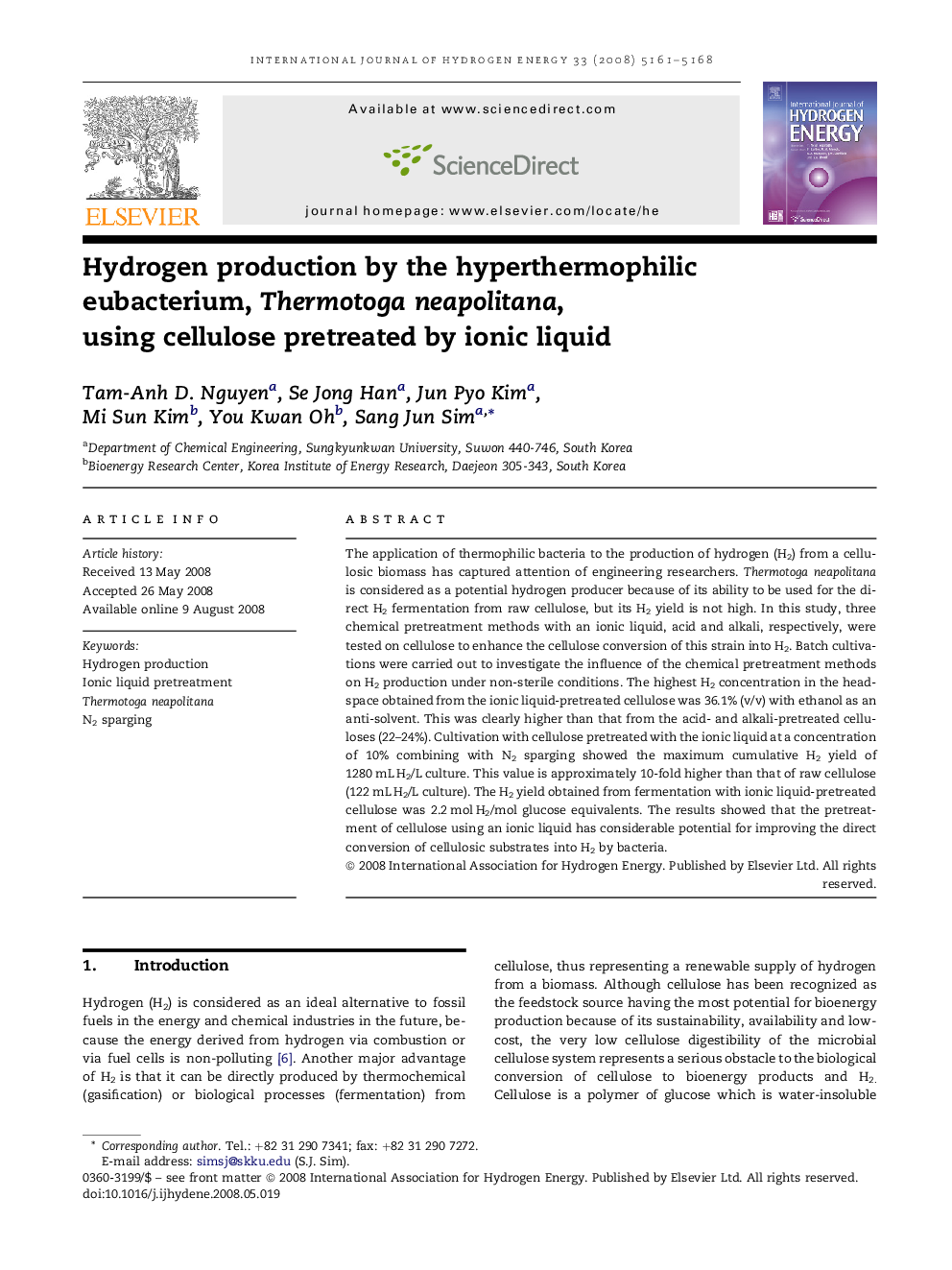| Article ID | Journal | Published Year | Pages | File Type |
|---|---|---|---|---|
| 1281431 | International Journal of Hydrogen Energy | 2008 | 8 Pages |
The application of thermophilic bacteria to the production of hydrogen (H2) from a cellulosic biomass has captured attention of engineering researchers. Thermotoga neapolitana is considered as a potential hydrogen producer because of its ability to be used for the direct H2 fermentation from raw cellulose, but its H2 yield is not high. In this study, three chemical pretreatment methods with an ionic liquid, acid and alkali, respectively, were tested on cellulose to enhance the cellulose conversion of this strain into H2. Batch cultivations were carried out to investigate the influence of the chemical pretreatment methods on H2 production under non-sterile conditions. The highest H2 concentration in the headspace obtained from the ionic liquid-pretreated cellulose was 36.1% (v/v) with ethanol as an anti-solvent. This was clearly higher than that from the acid- and alkali-pretreated celluloses (22–24%). Cultivation with cellulose pretreated with the ionic liquid at a concentration of 10% combining with N2 sparging showed the maximum cumulative H2 yield of 1280 mL H2/L culture. This value is approximately 10-fold higher than that of raw cellulose (122 mL H2/L culture). The H2 yield obtained from fermentation with ionic liquid-pretreated cellulose was 2.2 mol H2/mol glucose equivalents. The results showed that the pretreatment of cellulose using an ionic liquid has considerable potential for improving the direct conversion of cellulosic substrates into H2 by bacteria.
